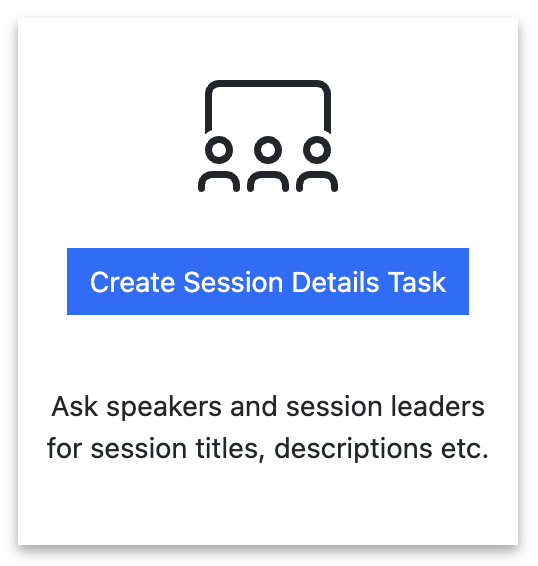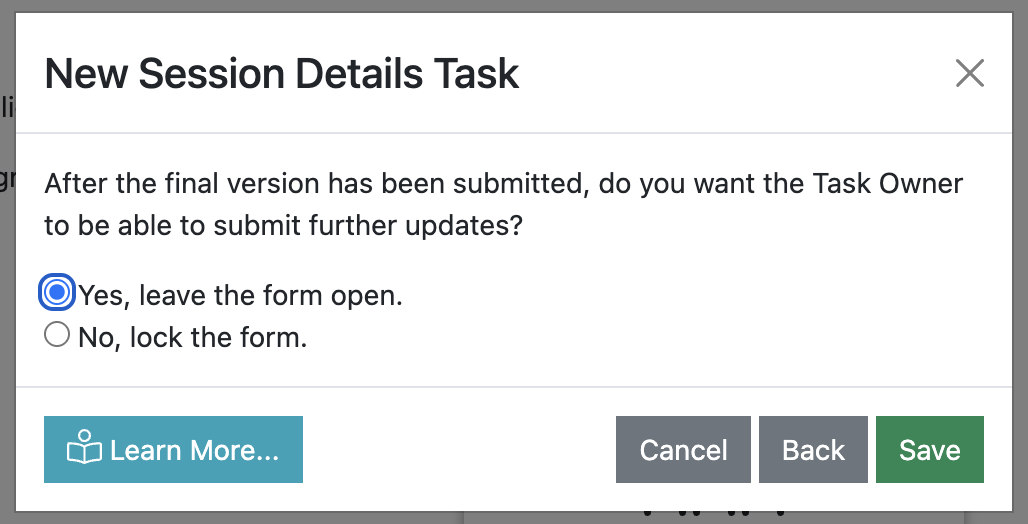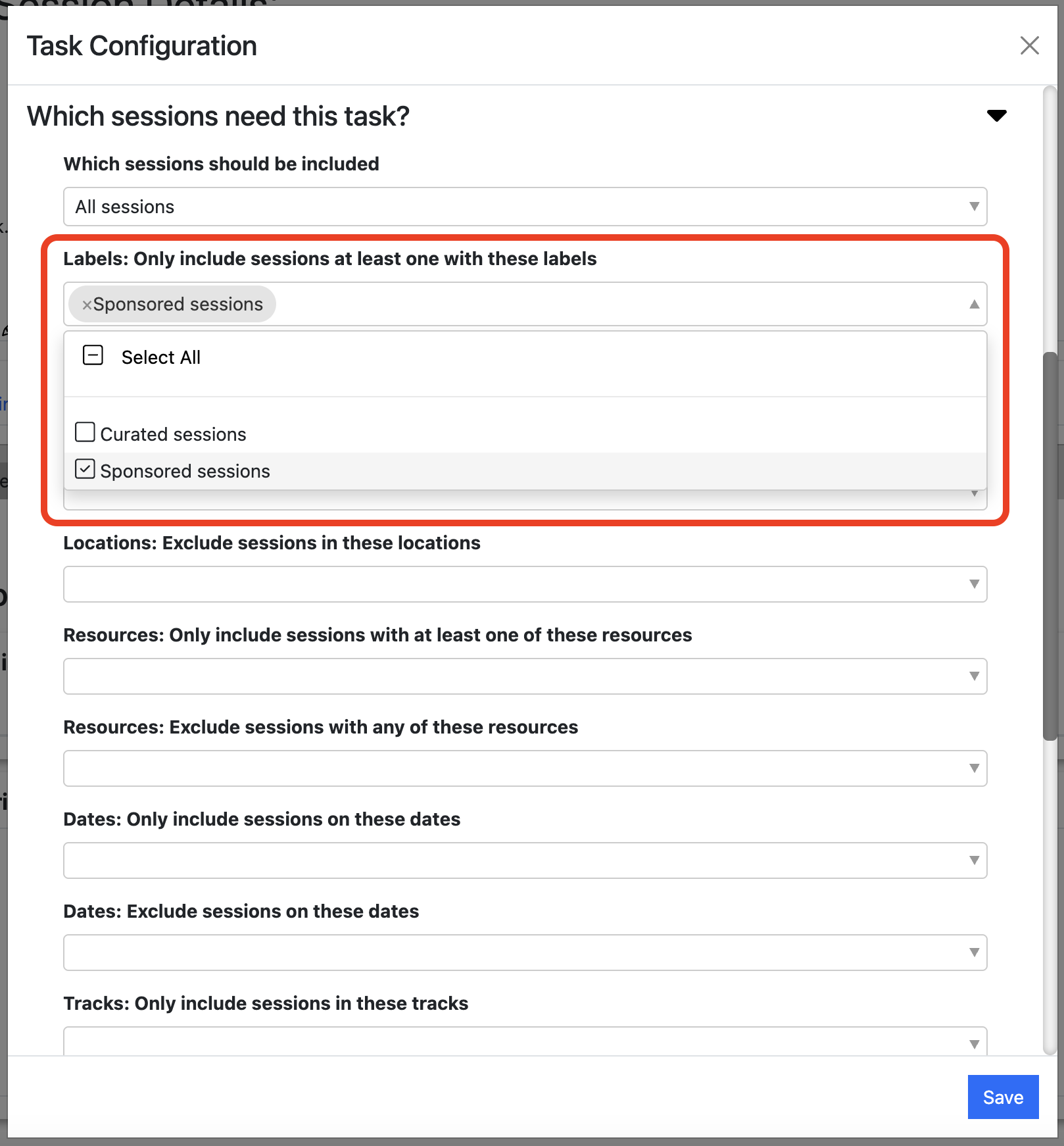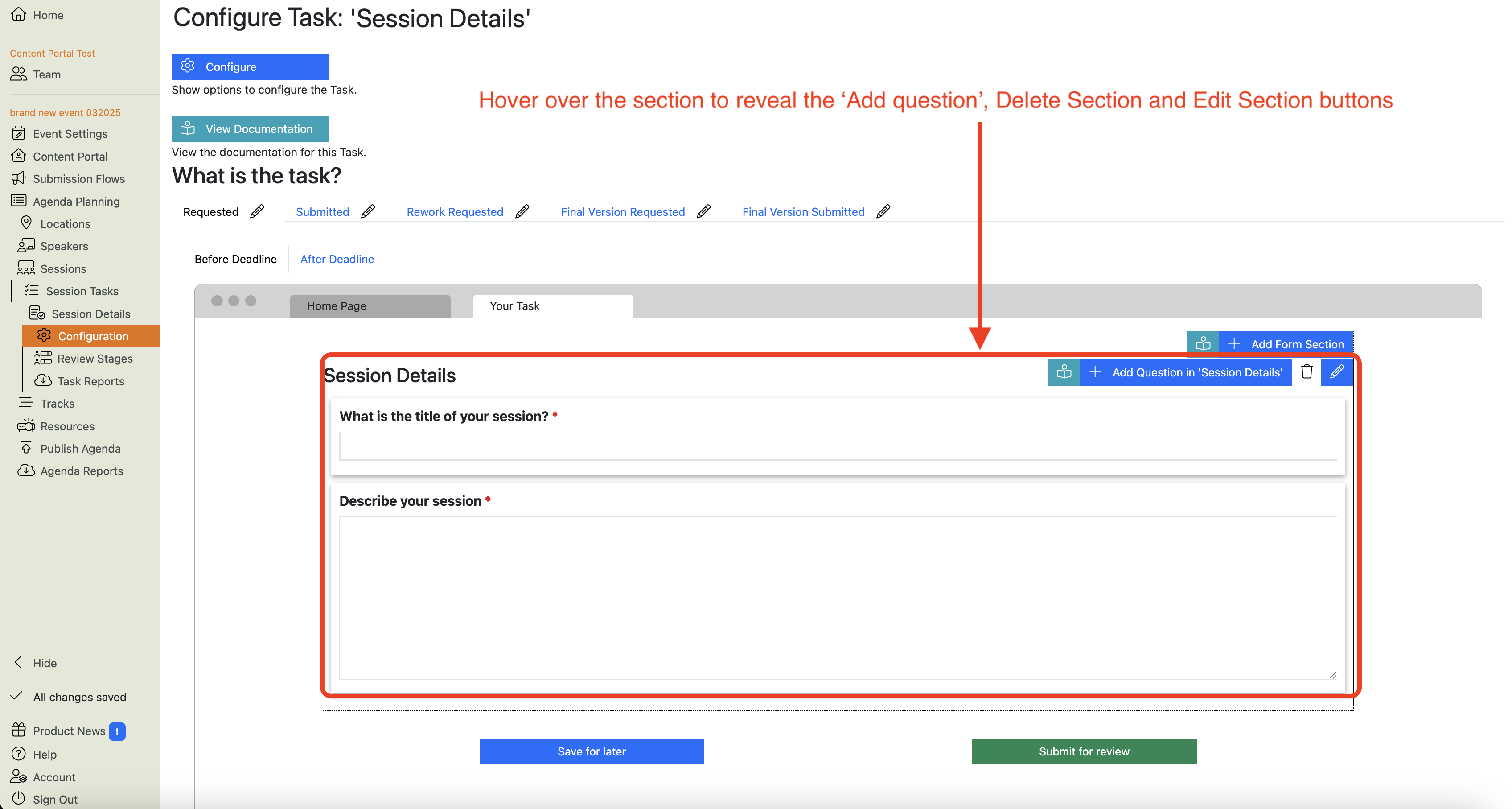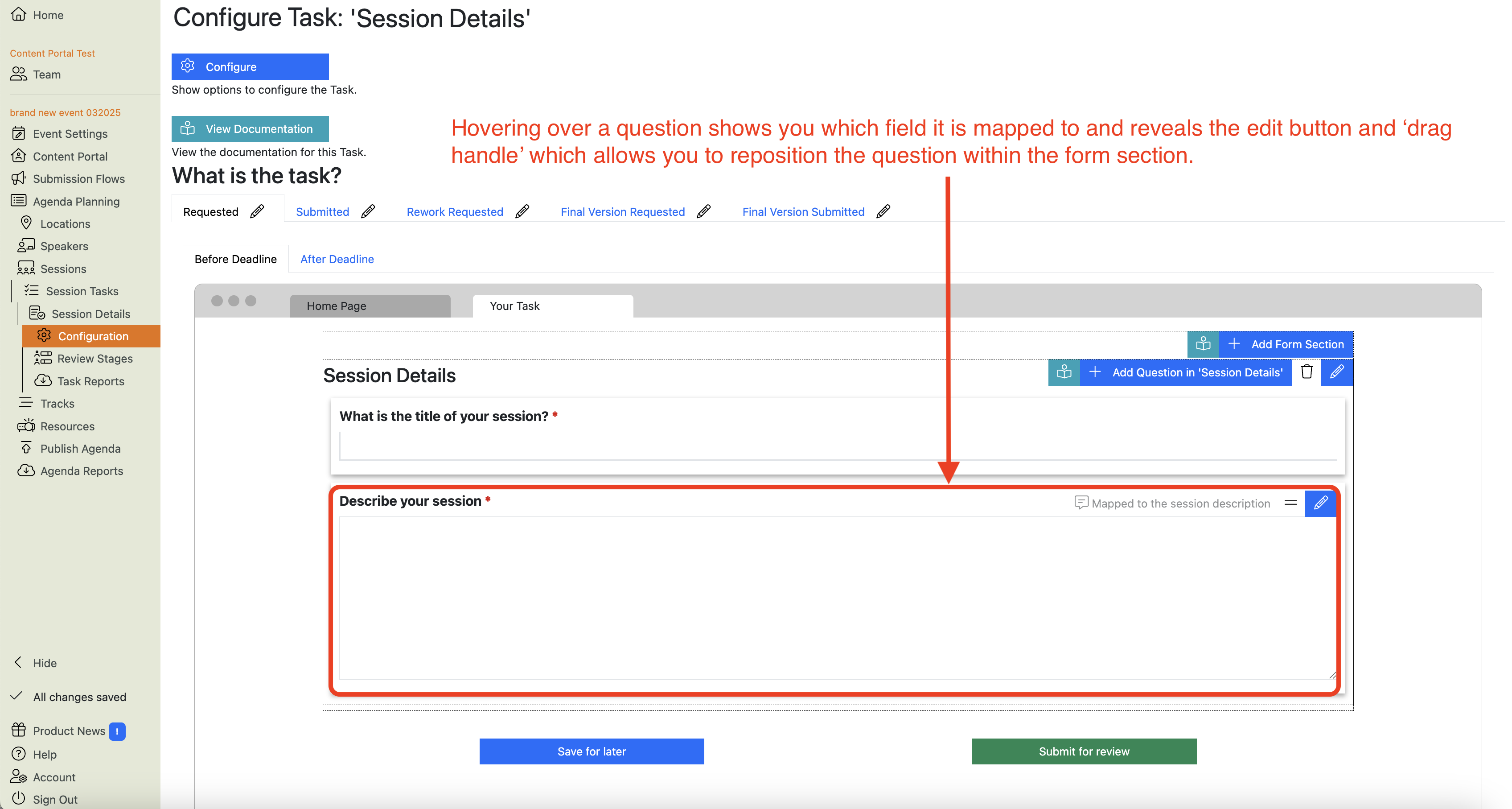Session Details Task
How do I use the Session Details Task to collect information about a Session?
Here’s a step-by-step guide to creating and configuring the Session Details Task:
-
Go to your event, and then: Agenda Planning / Sessions / Session Tasks.
-
Accept or edit the task name, and optionally, provide a deadline for the task:
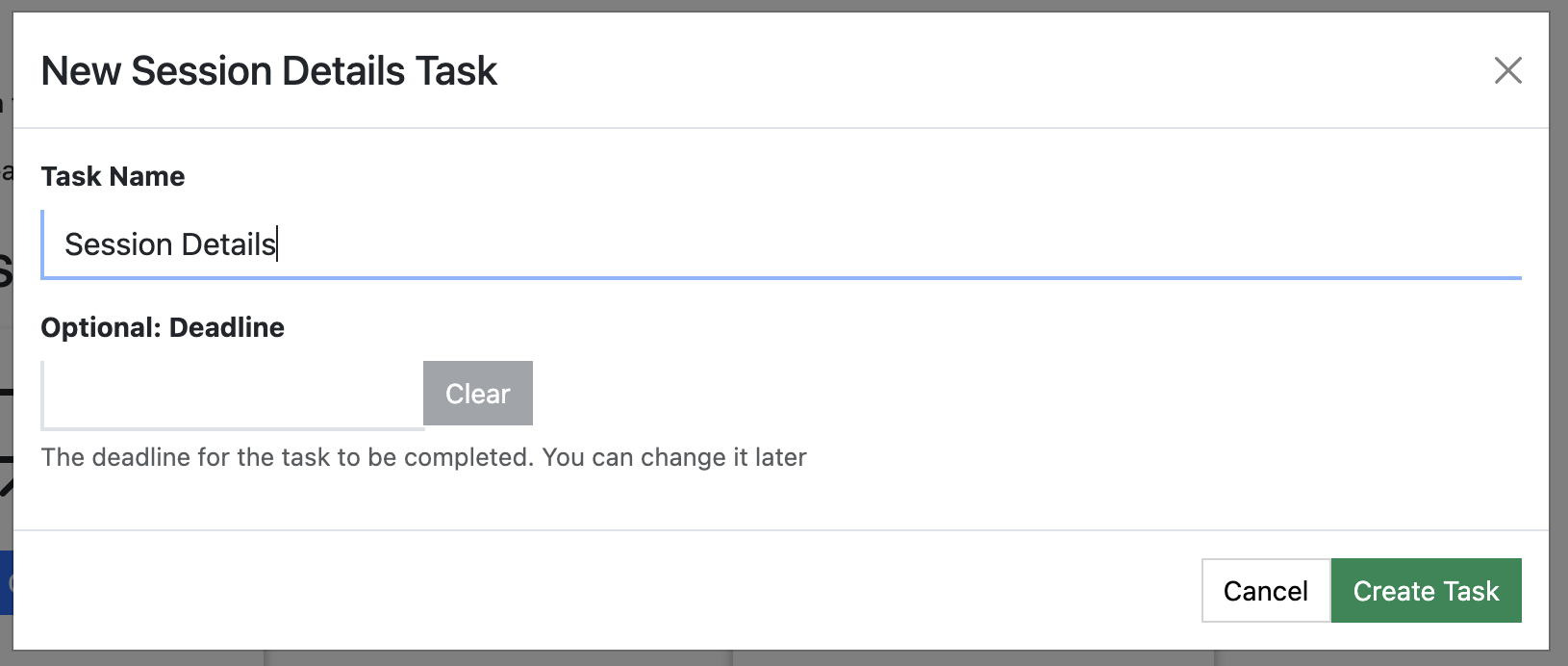

-
Choose which fields you want to capture for your sessions:


The choices you make here will populate the task’s form with the relevant questions.Tip
You have the option to collect Slides and Handouts as part of this task.
However, it is typical to collect session details early in the content management process, and to gather slides and handouts much closer to the event.
For this reason, Lineup Ninja also has a Session Task template just for slides and handouts.
-
Next you will be asked if you want to review the content before adding it to the Session record on the agenda.
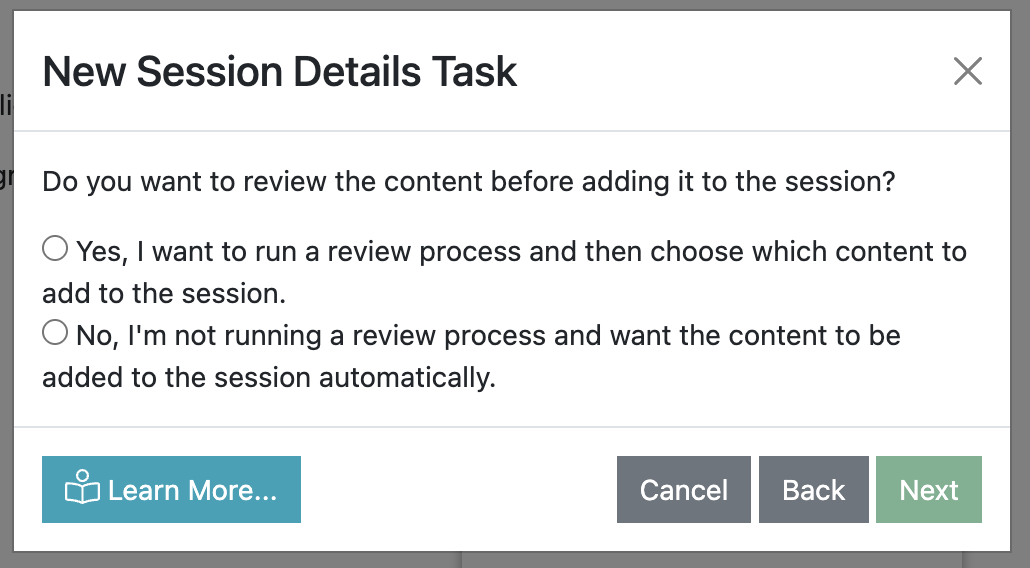

Answering “Yes, I want to run a review process and then choose which content to add to the session.” will NOT automatically update the session on the agenda. Instead, you will be able to manually update session from the Task data when you’ve reviewed it and are happy with it.
Answering “No, I’m not running a review process and want the content to be added to the session automatically.” will mean that when Task Owners fill the form in, the session record on the agenda will be updated automatically and immediately.Warning
If you answer ‘No’ to this question, Task Owners can directly update the Session’s record on the agenda - i.e. you are effectively allowing them to edit data that will be published to the show website, mobile app, signage etc.
If you have ‘Scheduled Publishing’ enabled on any of your publications (website, mobile app etc), it is possible that these changes will be automatically published without anyone from the content team reviewing this content. -
If you choose ‘Yes, I want to run a review process…’ to the question in step 5, you will see this question:
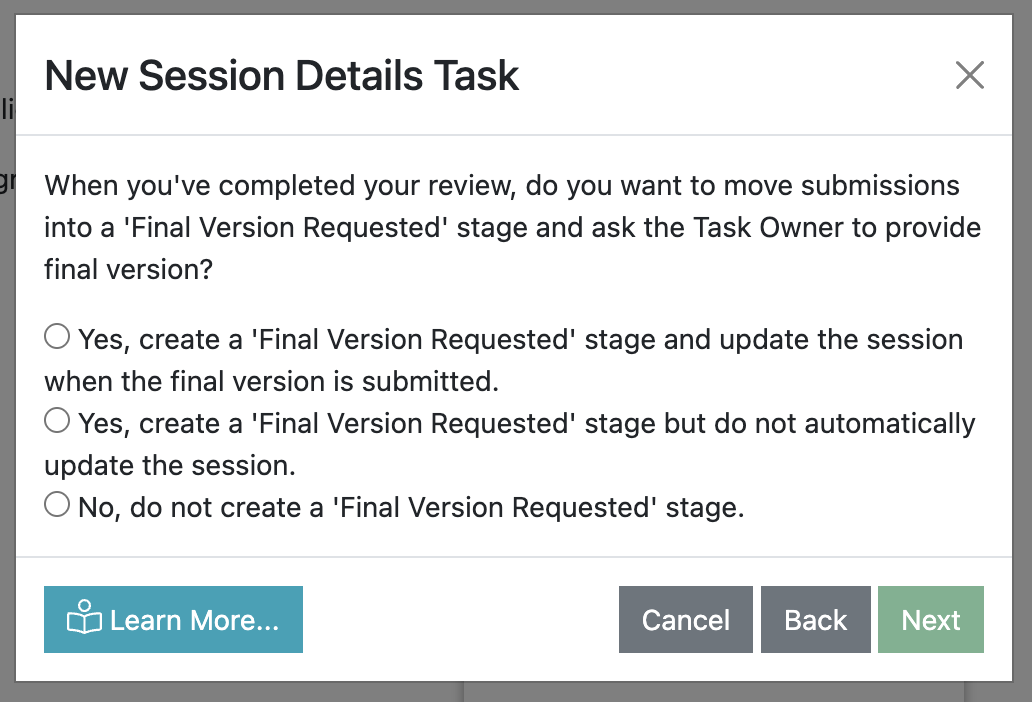

This allows you to choose whether to add another Stage to your Session Details Task to capture a final version of the session details - or not.
And if you DO choose to add a ‘Final Version Requested’ stage to your task, you can choose whether that final version of their details should automatically update the Session on the agenda, or not.Tip
This can be useful in a couple of situations:
1. If you want task owners to provide a draft - or limited - version of the session (e.g. a working title and draft session description) early in your process so you can use it to promote the content at your show, and then collect a final version closer to the show.
2. If you want to review session details and ask the task owners to make changes based on your feedback. -
How do you want the form to behave when Task Owners submit their details?
Would you like to: -
You will now be taken to the Session Details Tasks Configuration Page, which will have the Task Configuration Dialogue pop-up already open:
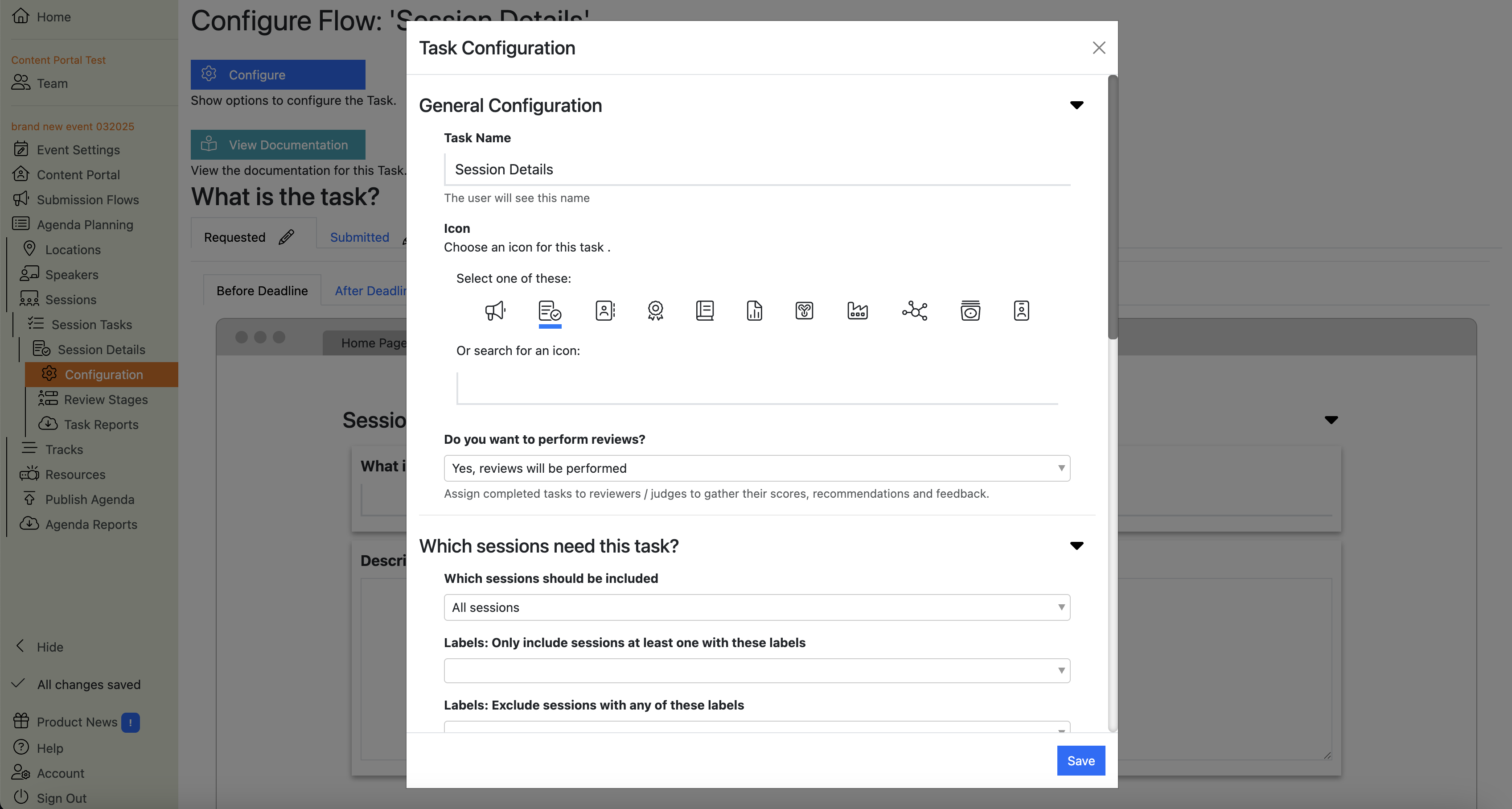

-
The Task Configuration Dialogue pop-up allows you to check (and change) some of the settings you’ve just chosen, and is where you can make some other important configuration choices.
Two important settings that you should review here are: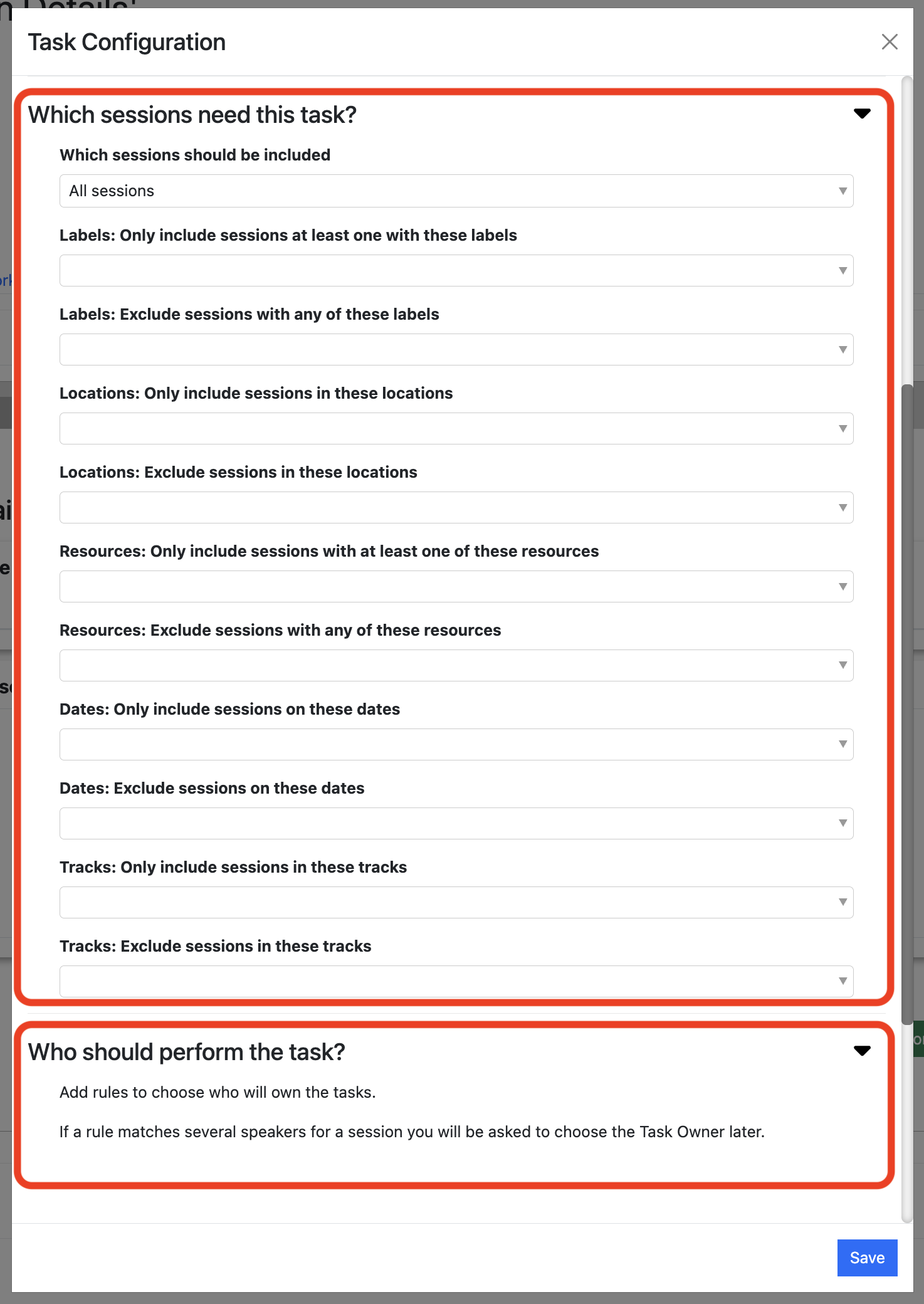

-
Which sessions need this task? This allows you to filter which sessions need this task to be performed.
Tip
This is useful if you have different sets of sessions, and the process for collecting their details is different.
For example, let’s say you have two types of sessions:
- Curated Sessions, for which the conference producer writes the session titles and descriptions.
- Sponsored Sessions, for which sponsors provide the session titles and descriptions.
In this case, you only need to collect session details for the sponsored sessions.
You can do this by:
1. Creating [labels](/event/labels/ “Labels”) for the sessions called:
- Curated sessions
- Sponsored sessions
2. Assigning those labels to the relevant sessions. <br>
3. When you create the Session Details task you can choose “Sponsored sessions” in the field: “Labels: Only include sessions with at least one of these labels”.
4. Then when you assign the task, it will only create this task for sessions with the ‘Sponsored session’ label. -
Who should perform this task? This allows you to decide who the Task Owners will be. You can set rules to automatically assign this task to the relevant people.
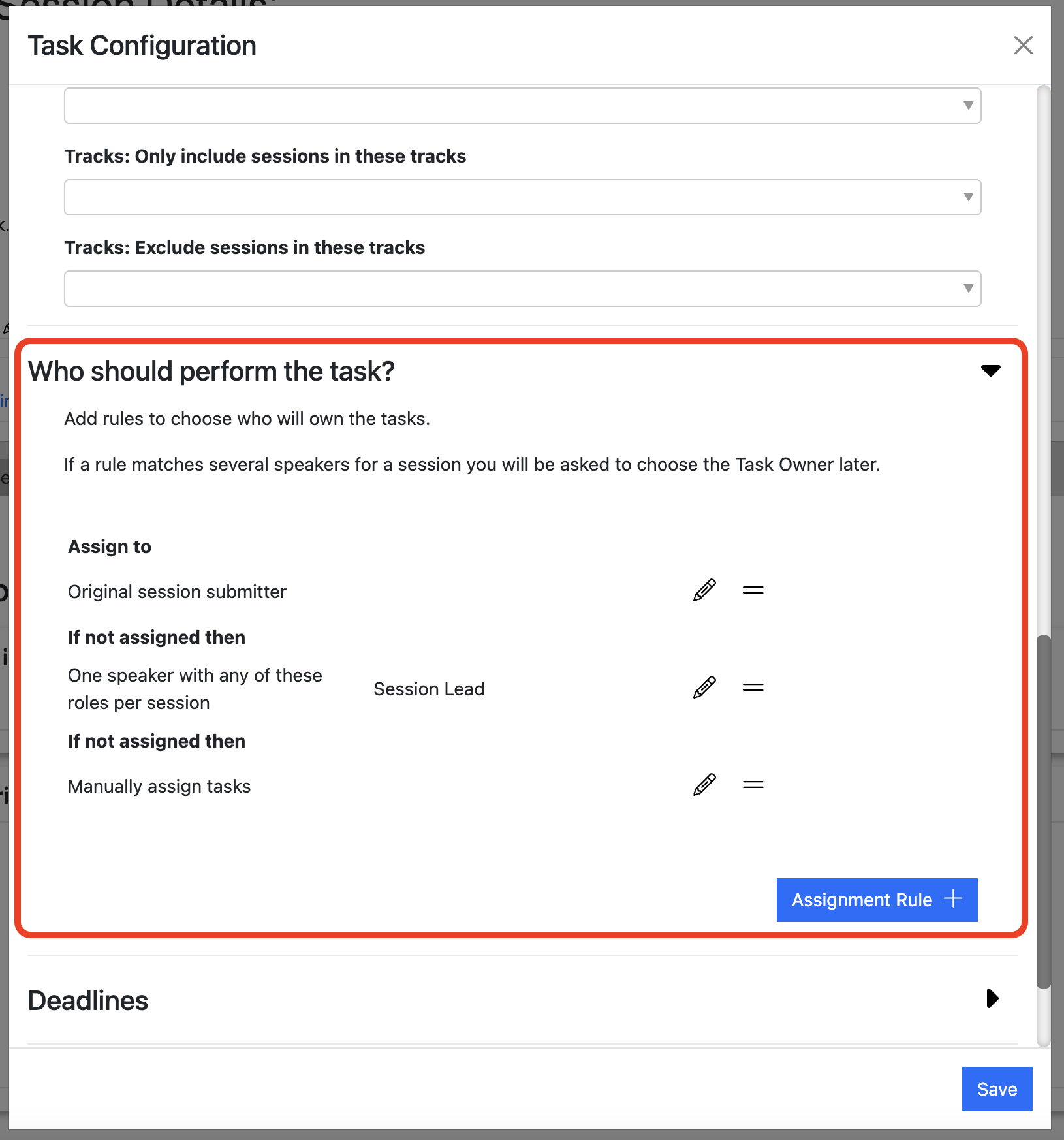

Finally, you can add deadlines to each stage, and even reorder the stages in your task in the Task Configuration Dialogue pop-up if you need to: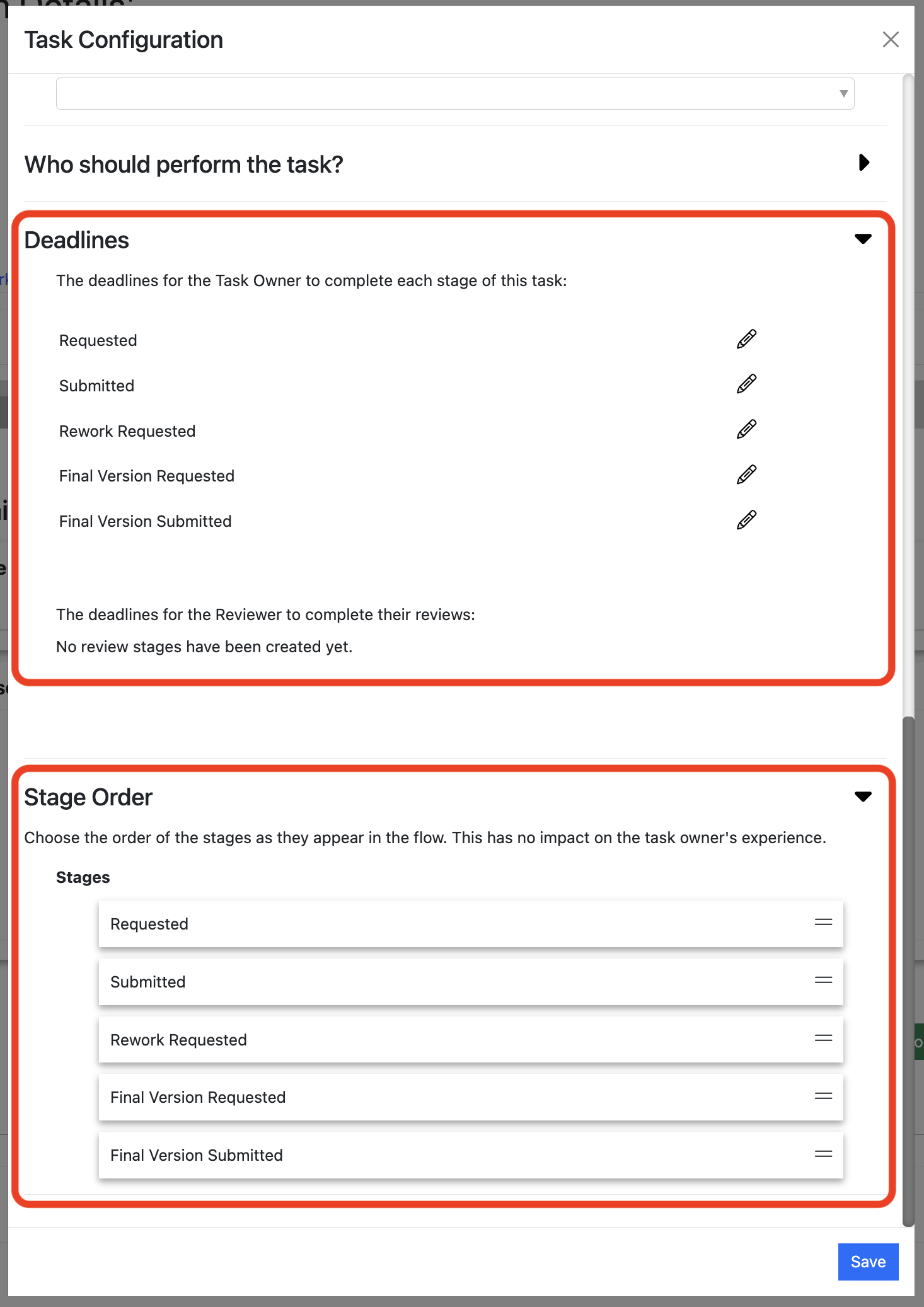

Once you’ve reviewed these settings, click the blue ‘Save’ button. This will close the Task Configuration Dialogue pop-up.
-
-
You will now see the Session Details Task Configuration ‘Main View’.
This view has various other elements that you can preview and configure:-
The task’s stages
-
The task’s behaviour before and after its deadline
-
A preview of how this task will appear in the “My Tasks” section of the Home Page in the Content Portal.
-
“Your Task” i.e. the form that the Task Owner will fill in. Note that the form has the questions that correspond to the choices you made in Step 4, above - “Which details do you want to gather”:
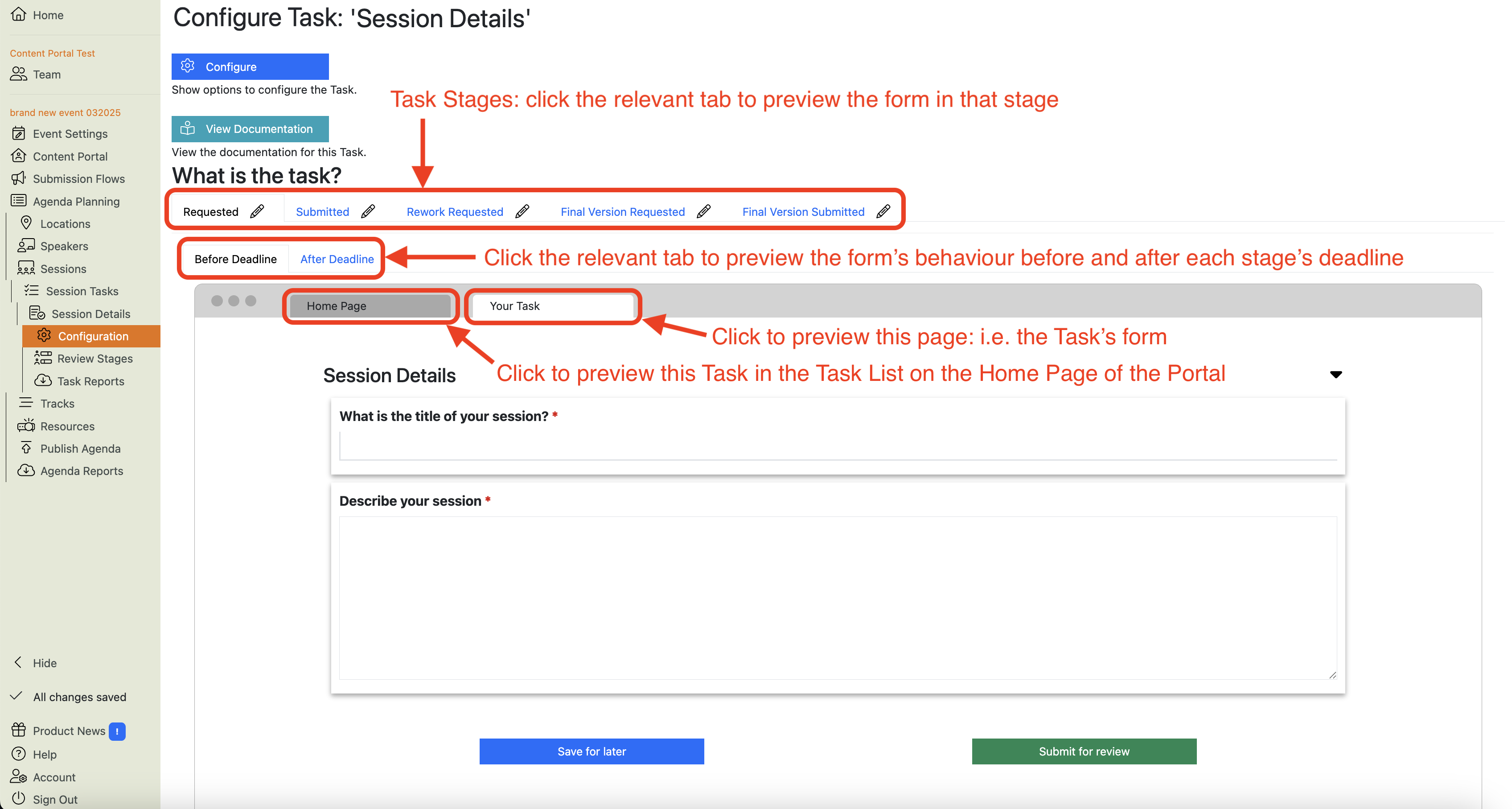

-
If you hover over the form, it will reveal the option to add another form section:
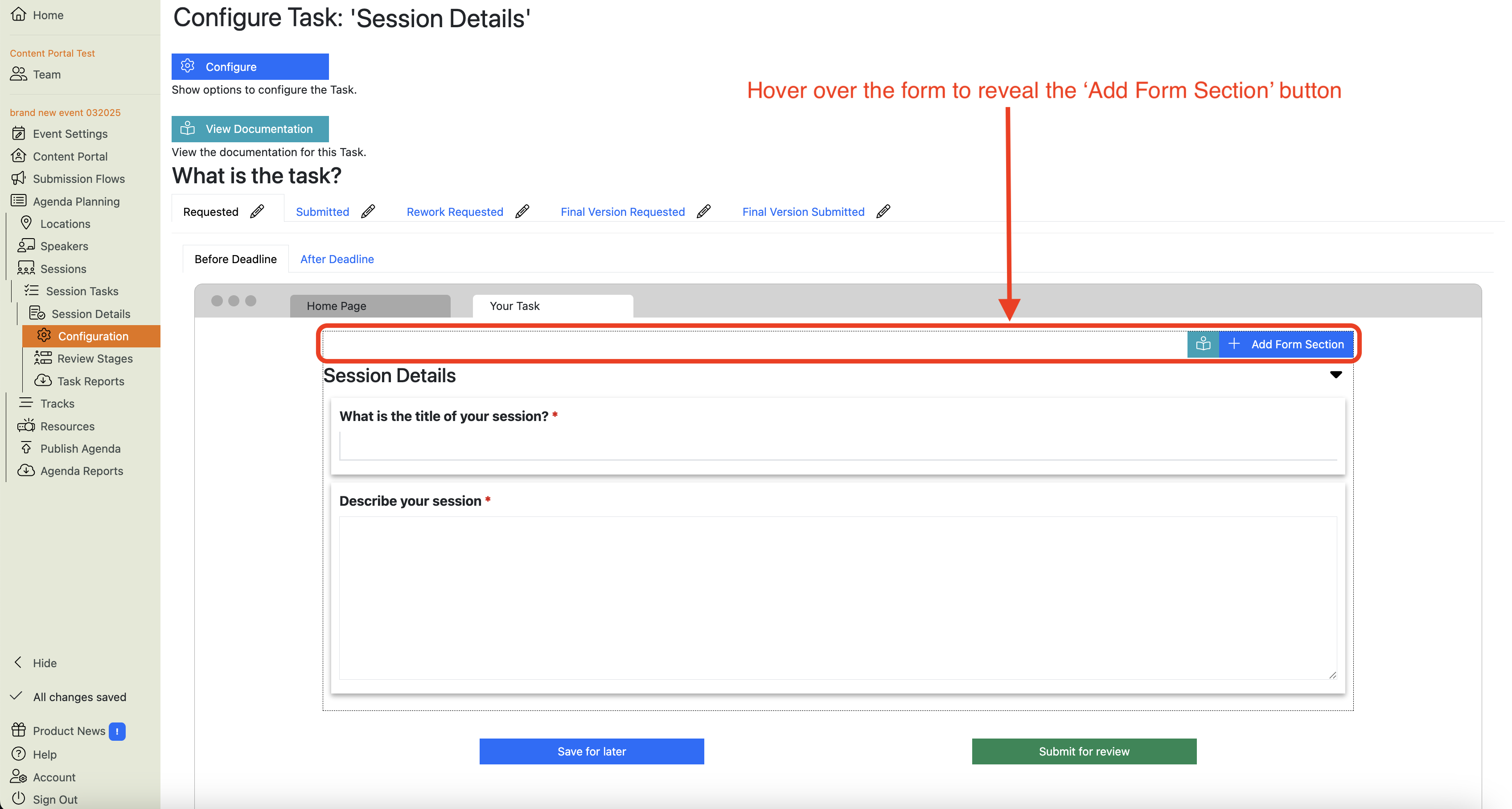

-
If you hover over the form ‘section’ (i.e. where it says ‘Session Details’), it will reveal various action buttons which allow you to:
-
If you hover over a question, it will reveal which field the question is mapped to, as well as the question edit button and drag handle which allows you to reposition the question within the form section.
-
-
Now you’ve set up the task, see the Session Tasks page for details of how to:
- Edit questions
- Add standard questions
- Add custom questions
- Delete questions
- Edit the buttons at the bottom of the form in a Session Task
- Add a button to the bottom of the form in a Session Task
- Add a confirmation popup to the buttons at the bottom of the form
- Edit email templates for a Session Task
- Add email templates for a Session Task
- Copy a Session Task
- Delete a Session Task
- Assign Session Tasks to Task Owners
- Manage and track Session tasks’ progress.
- Run a report of a Session Task’s status
